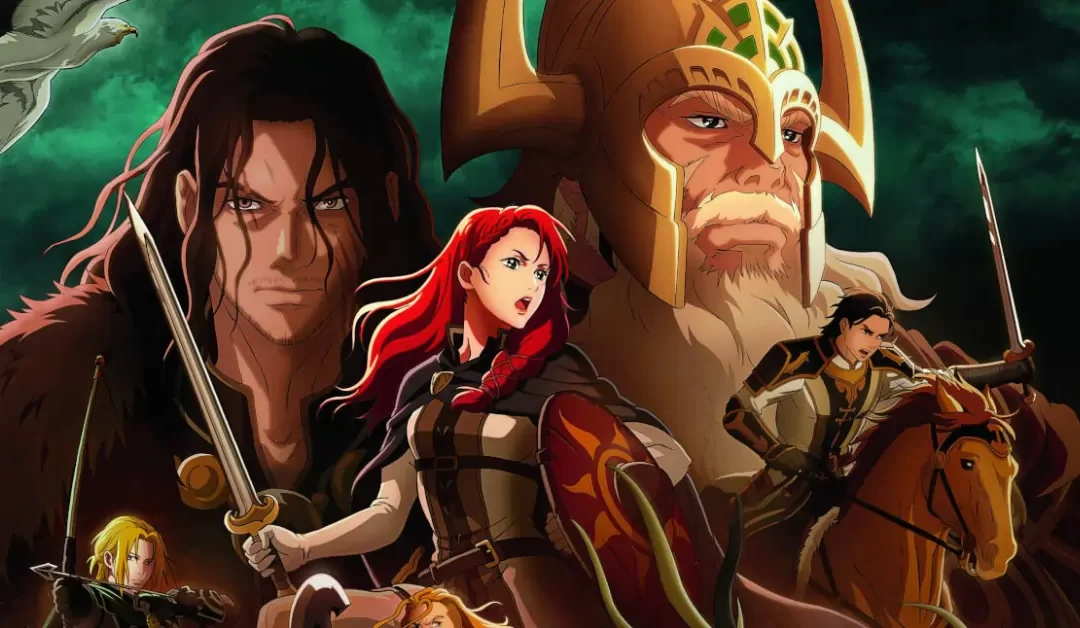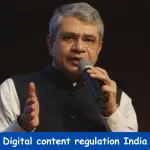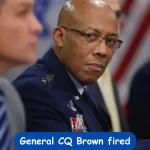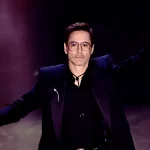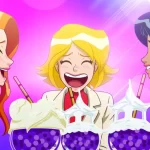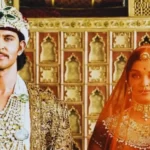expand Tolkien’s legendary universe but stumbles under the weight of its narrative flaws. Set 183 years before the events of the iconic Lord of the Rings trilogy, the story delves into the life of Helm Hammerhand, the revered king of Rohan. Tolkien briefly mentions Helm’s story in the appendices of The Lord of the Rings, but this adaptation attempts to flesh it out, centering on themes of revenge, resilience, and war.
The film begins with Freca, a Dunlending lord with Rohirric lineage, visiting Helm’s hall alongside his son Wulf, Hera’s childhood friend, and General Targg. Freca’s proposal to marry his son to Hera, Helm’s daughter, is met with resistance, as Hera has no interest in marriage. Helm, suspecting Freca’s true intention is to usurp the throne, confronts him, inadvertently killing him. This sets Wulf on a path of vengeance, laying siege to Rohan and plunging the kingdom into a cycle of destruction and bloodshed. Hera, far from being a passive victim, rises as the story’s unlikely hero, taking her fate into her own hands and challenging her adversaries head-on. However, despite the film’s attempt to craft an empowering arc for Hera, her transformation feels rushed and fails to resonate deeply.
A Visual Spectacle That Lacks Emotional Depth
The animation is undoubtedly the film’s crowning achievement. Director Kenji Kamiyama blends painterly aesthetics with hand-drawn techniques to vividly bring Rohan to life. The battle sequences, in particular, are breathtaking, capturing the raw energy and chaos of Tolkien’s world in a way only animation can. From sweeping landscapes to the adrenaline-fueled clashes of warriors, every frame is a feast for the eyes. However, the visual triumphs of the medium struggle to compensate for the lack of emotional resonance and the narrative richness that defined Peter Jackson’s live-action adaptations.
Hera, the central figure in this tale, is a fascinating choice for a protagonist. Previously nameless in Tolkien’s lore, she is given a voice and agency in The War of the Rohirrim. Despite this bold narrative choice, her character arc remains shallow and formulaic. The story unfolds predictably, with Wulf’s revenge plot offering little in terms of surprises or complexity. Hera’s growth from a sheltered royal to a warrior leader feels hurried, robbing the narrative of the emotional weight it aspires to achieve. Moreover, the absence of Tolkien’s iconic Middle-earth races—elves, dwarves, and hobbits—diminishes the magical variety that has always been integral to the franchise, leaving the world feeling stark and one-dimensional.
Missed Opportunities in Medium and Format
Choosing animation as the medium for this prequel is a double-edged sword. While it allows for creative freedom and visual splendor, it also distances the film from the cinematic legacy of The Lord of the Rings. A live-action adaptation might have bridged this gap, offering a sense of continuity with the beloved trilogy while enhancing the narrative’s gravitas.
The voice performances, while commendable, struggle to fully compensate for this disconnect. Brian Cox delivers a commanding portrayal of Helm Hammerhand, and Miranda Otto’s nostalgic narration as Éowyn evokes echoes of the original trilogy. Gaia Wise, voicing Hera, gives a spirited performance, but her character’s anime-inspired design feels oddly out of place, clashing with the European aesthetics of the other characters. This stylistic inconsistency further detracts from the immersive experience.
A Brand-Building Exercise More Than a Meaningful Expansion
Ultimately, The War of the Rohirrim comes across as a beautifully crafted yet unnecessary addition to the Lord of the Rings franchise. While the animation dazzles, the film leans heavily on visual callbacks to the original trilogy without delivering a compelling standalone story. The absence of Tolkien’s hallmark themes of unity among diverse races and the magic of Middle-earth leaves the film feeling hollow. The lack of elves, dwarves, and the richness they bring underscores a missed opportunity to explore the depth of Tolkien’s world.
The film feels more like a brand-building exercise than a meaningful expansion of Tolkien’s mythos. Fans of the franchise may appreciate the effort and the visual artistry, but many will find themselves longing for the epic, character-driven storytelling that made Middle-earth unforgettable.
A World That Feels Less Magical
Tolkien envisioned a world where various races coexisted, adding layers of complexity and wonder to his stories. By excluding these elements, The War of the Rohirrim feels bereft of the magic that defined the original tales. The result is a visually spectacular yet narratively barren experience that struggles to justify its place within the larger Lord of the Rings universe. For those keeping up with the latest news in Tolkien adaptations, this film offers glimpses of brilliance but ultimately falls short of recapturing the magic. While it may generate buzz in current affairs of entertainment, it leaves a void that even its stunning visuals cannot fill.

